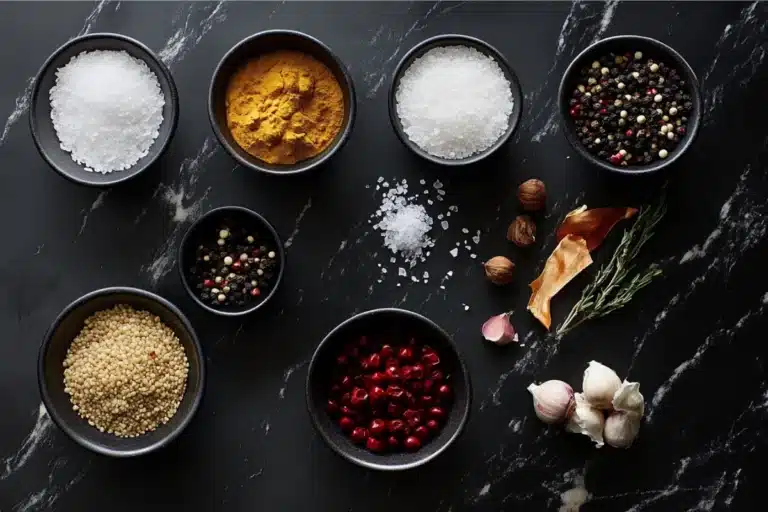Why Proper Preparation Matters for Chicken Salad
Preparation of chicken salad is more than just tossing ingredients into a bowl—it’s an art. The way you cook your chicken, chop your vegetables, and mix your dressing makes all the difference between a bland, watery mess and a fresh, flavorful dish.
A well-prepared chicken salad balances textures, flavors, and freshness. If you’ve ever had a soggy or dry salad, chances are the preparation steps were off. Whether you’re making a quick lunch, prepping meals for the week, or serving guests, mastering the preparation of chicken salad ensures you get the best results every time.
By following the right steps, you’ll create a dish that’s not only delicious but also visually appealing and satisfying. Whether you’re making it for a quick lunch, a family picnic, or a fancy brunch, proper preparation will make all the difference.
What Makes a Great Chicken Salad?
A truly great chicken salad comes down to three main factors: texture, flavor, and freshness. Here’s what you need to focus on:
- Perfectly Cooked Chicken: Dry, overcooked chicken? No thanks! You need tender, juicy meat that absorbs the flavors of the dressing.
- The Right Mix of Ingredients: A great chicken salad includes a variety of textures—crunchy celery, creamy dressing, and tender chicken.
- Balanced Seasoning: The right combination of herbs, spices, and dressings will elevate your salad from “meh” to “wow.”
- Freshness Matters: Using fresh veggies, herbs, and high-quality dressing ensures a vibrant, flavorful salad every time.
A chicken salad should never be too dry, too wet, or overly salty. Instead, it should have a balanced, harmonious blend of ingredients that keep you coming back for more.
Who Will Love This Recipe?
The beauty of chicken salad is its versatility. It appeals to just about everyone—whether you’re a health-conscious eater, a meal prep enthusiast, or someone who just loves a quick, tasty meal.
- Busy Professionals: Need a meal that’s easy to prepare and perfect for lunch? This recipe is for you.
- Parents Looking for a Healthy Meal: Packed with protein and fresh veggies, this dish is a great way to get your family eating well.
- Foodies Who Love Customization: You can tweak this recipe with different dressings, add-ins, or even swap out ingredients to fit your taste.
- Meal Preppers: Make a big batch and enjoy it for days. It stores well and makes a fantastic grab-and-go option.
If you love meals that are easy, delicious, and endlessly customizable, this chicken salad recipe will be your new go-to.
Key Benefits of a Well-Prepared Chicken Salad
Still not convinced that proper preparation matters? Here are some reasons to take your chicken salad game to the next level:
- Better Taste: The right ingredients and cooking techniques bring out the best flavors.
- Ideal Texture: Nobody wants a mushy salad. Proper prep keeps everything crisp and fresh.
- Healthier Option: Using fresh, quality ingredients means fewer preservatives and unhealthy additives.
- Versatility: A well-made chicken salad can be served in so many ways—on a sandwich, in a wrap, over greens, or even on its own.
Common Myths About Making Chicken Salad
When it comes to chicken salad, there are a lot of misconceptions. Let’s clear up a few common ones:
- Myth #1: Mayonnaise is the Only Dressing Option – While mayo is classic, Greek yogurt, avocado, or vinaigrette can also make a fantastic dressing.
- Myth #2: It Has to Be Served Cold – While most people prefer it chilled, warm chicken salad can be incredibly delicious.
- Myth #3: Leftovers Are Always Soggy – If stored correctly, chicken salad can stay fresh and crisp for days.
- Myth #4: You Can Use Any Chicken – Not all chicken is created equal. The cooking method you use makes a big difference in texture and flavor.
A Brief History of Chicken Salad
Believe it or not, chicken salad has been around for centuries. The first recorded chicken salad recipe dates back to the 1800s in the United States. Originally, it was a way to use up leftover chicken, combined with mayonnaise, mustard, and pickles.
Over time, variations emerged around the world. In Asia, chicken salad often includes soy sauce, ginger, and sesame oil. In Europe, it’s common to find versions with mustard-based dressings and nuts. The dish has evolved, but its core concept—tender chicken mixed with flavorful ingredients—has stayed the same.
How This Recipe Has Changed Over Time
Chicken salad has gone through quite the transformation. While the basic ingredients have remained the same, modern versions now include:
- Healthier Dressings: Swapping mayo for yogurt or avocado for a lighter option.
- Unique Add-Ins: Fruits like grapes, nuts, and seeds for added crunch and sweetness.
- Global Flavors: Spices, herbs, and ingredients inspired by international cuisines.
What started as a simple dish has now become a customizable, gourmet meal.
The Correct Sequence in Salad Preparation
Making the perfect chicken salad isn’t just about tossing ingredients into a bowl and hoping for the best. There’s a method to the madness. The sequence in which you prepare and assemble your salad matters—a lot. By following a structured process, you’ll achieve the best texture, taste, and freshness every time.
Here’s the correct sequence for preparing a top-tier chicken salad:
- Choose and Cook Your Chicken Properly – The foundation of your salad.
- Prepare the Other Ingredients – Chop veggies, measure dressings, and get everything ready.
- Shred or Dice the Chicken – The way you cut your chicken affects texture and bite.
- Mix the Ingredients Carefully – Overmixing can lead to a mushy salad, while undermixing can leave you with uneven flavor distribution.
- Chill Before Serving – Let the flavors meld together for the best taste.
Now, let’s break down each of these steps in more detail.
Step 1: Choosing the Right Chicken
Not all chicken is created equal when it comes to making a great chicken salad. The best choice depends on the texture and flavor you’re going for.
Best Chicken Cuts for Salad:
- Boneless, Skinless Chicken Breast: Lean, easy to cook, and absorbs flavors well.
- Rotisserie Chicken: A quick and flavorful option, already cooked and seasoned.
- Chicken Thighs: Juicier and more flavorful than breast meat but slightly higher in fat.
- Leftover Chicken: Perfect if you have extras from last night’s dinner, as long as it’s not overly seasoned.
For the best texture, chicken breast is often the preferred choice. It’s easy to shred or dice and provides a neutral base for absorbing dressing and seasonings.
Step 2: Cooking Methods for Tender Chicken
How you cook your chicken will impact the final texture of your salad. Overcooked chicken will be dry and chewy, while undercooked chicken is unsafe to eat. Here are the best cooking methods:
Boiling vs. Grilling: Which Works Best?
- Boiling: Keeps the chicken moist and makes it easy to shred. Best for a classic chicken salad.
- Grilling: Adds a smoky flavor and firmer texture, great for salads with bold ingredients.
- Baking: Provides a balance of moisture and flavor, especially when seasoned well.
- Slow Cooking: Ideal for making extra-tender, juicy chicken that falls apart effortlessly.
For a classic chicken salad, boiling or baking is the way to go. If you want extra depth of flavor, grilling is a great choice.
How to Shred or Dice Chicken Properly
Once your chicken is cooked, it’s time to break it down. The texture of your chicken can make or break your salad.
- Shredded Chicken: Best for a softer, more uniform salad. Use two forks to pull the meat apart.
- Diced Chicken: Provides a chunkier, more substantial texture. Use a sharp knife to cut into small cubes.
For the best texture, a mix of shredded and diced chicken works well. Shredded chicken absorbs dressing better, while diced chicken adds a satisfying bite.
Step 3: Selecting the Best Salad Ingredients
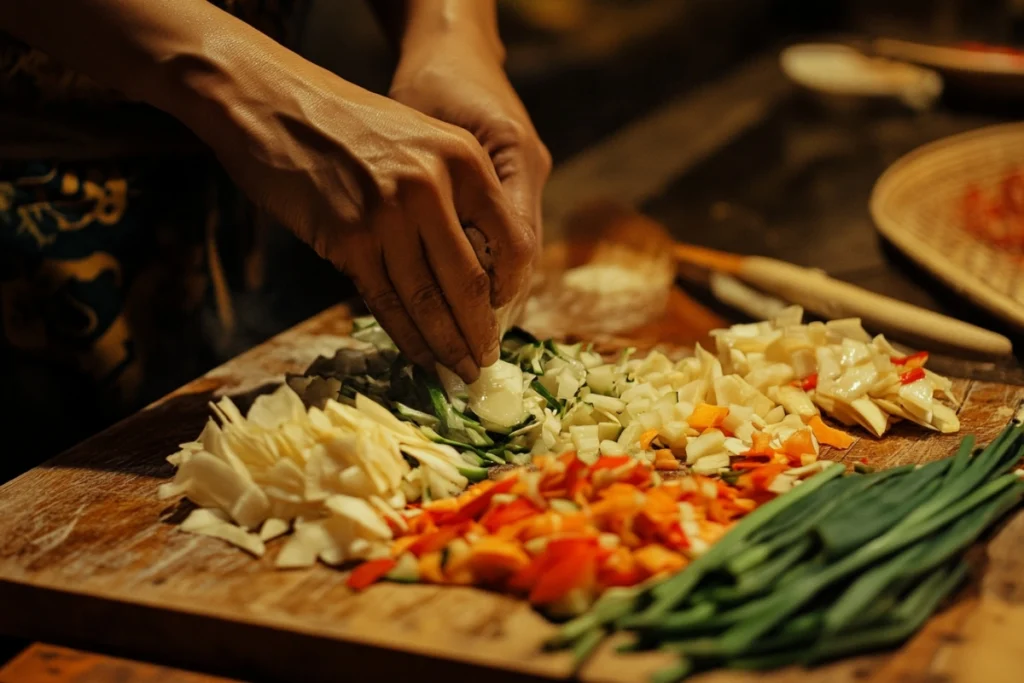
Now that the chicken is ready, it’s time to add the other key components. A great chicken salad includes a variety of textures and flavors to keep things interesting.
The Role of Fresh Vegetables and Herbs
Adding the right vegetables and herbs can take your salad from average to amazing.
- Celery: Adds a classic crunch and freshness.
- Red Onion: A bit of sharpness and color for extra flavor.
- Bell Peppers: A sweet, crisp bite that enhances texture.
- Fresh Herbs: Parsley, dill, or chives bring a fresh, aromatic touch.
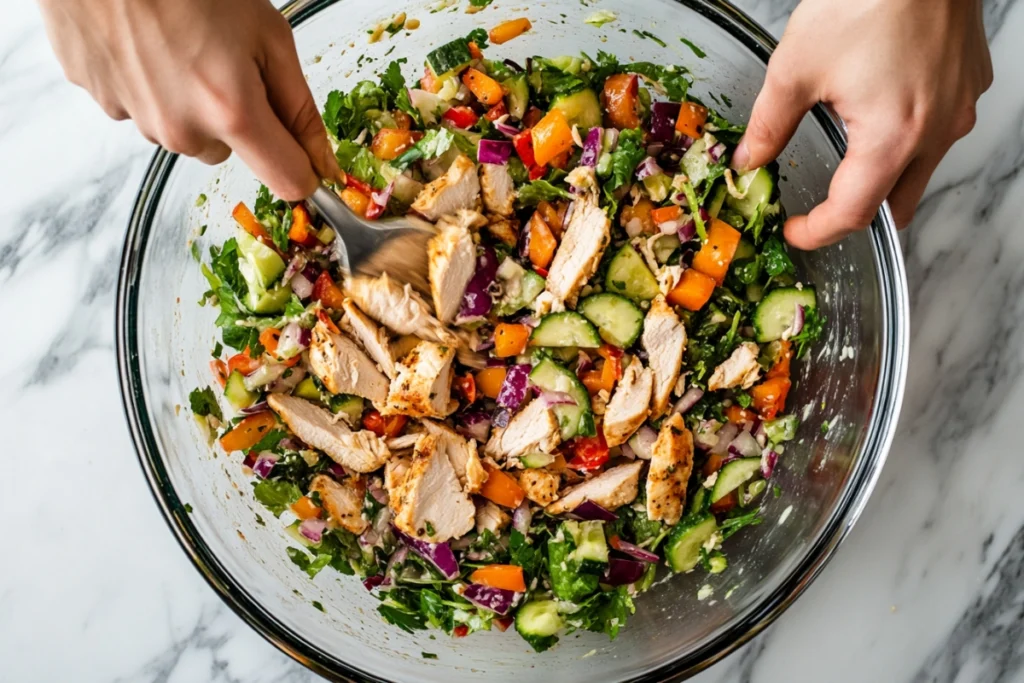
Choosing the Right Dressing for Flavor Balance
Your dressing holds everything together. Too much, and your salad turns into a soupy mess. Too little, and it’s dry and bland.
- Classic Mayonnaise Dressing: Rich and creamy, perfect for traditional chicken salad.
- Greek Yogurt Dressing: A healthier, tangy alternative.
- Honey Mustard Dressing: Slightly sweet with a mild kick.
- Avocado-Based Dressing: Ultra-creamy and packed with healthy fats.
Step 4: Mixing and Assembling for the Perfect Texture
When combining your ingredients, be gentle. Overmixing can break down the chicken too much, making your salad mushy.
Here’s the best way to assemble your salad:
- Start with the Chicken – Place shredded or diced chicken in a large bowl.
- Add Crunchy Ingredients – Mix in celery, onions, and bell peppers.
- Stir in the Dressing – Add gradually, tossing as you go to coat evenly.
- Fold in Fresh Herbs – These should go in last to maintain their bright flavor.
Chicken Salad Recipe
Here’s a simple, delicious chicken salad recipe that follows all these key steps.
Ingredients:
- 2 cups cooked, shredded or diced chicken
- ½ cup mayonnaise (or Greek yogurt for a lighter option)
- ½ cup chopped celery
- ¼ cup diced red onion
- 1 tablespoon fresh dill, chopped
- 1 teaspoon Dijon mustard
- 1 teaspoon lemon juice
- Salt and pepper to taste
Instructions:
- In a large bowl, combine the chicken, celery, red onion, and fresh dill.
- In a small bowl, whisk together mayonnaise, Dijon mustard, lemon juice, salt, and pepper.
- Pour the dressing over the chicken mixture and stir gently to combine.
- Chill in the refrigerator for at least 30 minutes before serving for the best flavor.
This recipe makes about 3-4 servings and contains approximately 250 calories per serving with 15g protein, 18g fat, and 5g carbs (depending on ingredient choices).
What Should Not Be Done in the Preparation of Chicken Salad?
Even the simplest recipes can go wrong if you make certain mistakes. Chicken salad may seem foolproof, but one misstep can turn your dish into a soggy, bland, or overly heavy mess. To make sure your salad stays delicious, let’s go over the most common mistakes and how to avoid them.
Common Mistakes That Ruin Chicken Salad
- Overcooking or Undercooking the Chicken – Dry, tough chicken is unpleasant, and undercooked chicken is unsafe. Always cook your chicken until it reaches an internal temperature of 165°F.
- Using Too Much Dressing – An overdressed salad is a nightmare. The chicken should be coated, not swimming in sauce.
- Adding Dressing While the Chicken is Hot – This can cause the dressing to separate and become watery. Always let your chicken cool before mixing.
- Skipping the Chilling Step – A warm chicken salad is not only unappetizing, but it also doesn’t allow the flavors to meld together properly. Refrigerate for at least 30 minutes before serving.
- Using Watery Vegetables – Cucumbers, tomatoes, and other high-water-content veggies can make your salad too runny. If you’re adding them, drain or deseed them first.
How to Avoid Soggy or Bland Salads
Nobody wants a chicken salad that turns into a watery mess or lacks flavor. Here’s how to keep things just right.
Overdressing vs. Underdressing
Finding the perfect balance of dressing is key. Too much and it’s a soupy disaster. Too little and it’s dry and unappetizing.
- Fixing Overdressing: If you’ve added too much dressing, try adding extra chicken or crunchy elements like celery to absorb some of the excess.
- Fixing Underdressing: Start with less dressing than you think you need and gradually add more until you reach the right consistency.
The Best Way to Prepare Chicken Salad
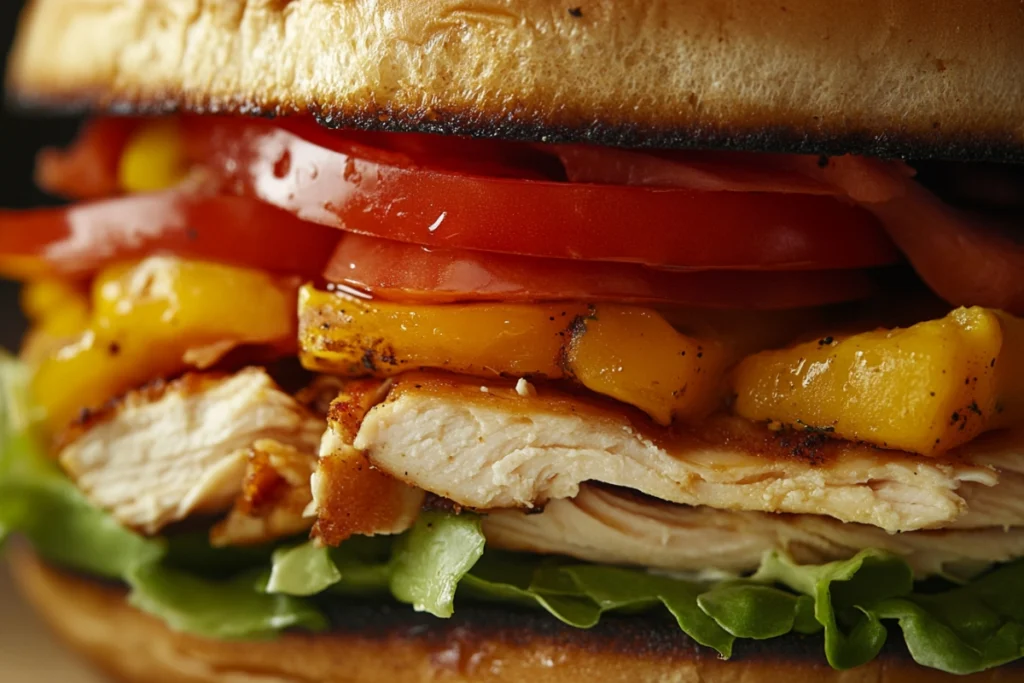
Now that you know what not to do, let’s go step-by-step through the best way to make chicken salad.
Step-by-Step Guide for the Perfect Mix
- Cook the Chicken Properly – Boil, grill, or bake until fully cooked, then let it cool.
- Shred or Dice the Chicken – A mix of textures works best.
- Prepare the Veggies and Other Add-Ins – Chop celery, onions, or nuts for crunch.
- Make the Dressing Separately – Whisk together mayo, yogurt, or other dressing ingredients in a separate bowl.
- Combine Everything Gently – Mix the ingredients in a large bowl, being careful not to overwork the salad.
- Chill Before Serving – Refrigerate for at least 30 minutes to let flavors develop.
Storing and Serving Chicken Salad Safely
Food safety is just as important as taste. Improper storage can lead to spoilage and foodborne illness. Here’s how to keep your chicken salad fresh and safe to eat.
To ensure your chicken salad remains safe to eat, always follow proper food safety guidelines for chicken. The USDA recommends keeping cooked chicken refrigerated below 40°F and consuming it within 3-4 days to prevent bacterial growth.
How Long Can Chicken Salad Be Stored?
- Refrigerated: Chicken salad lasts 3 to 4 days in an airtight container.
- Frozen: While you can freeze it, the texture may change. It’s best eaten fresh.
Best Practices for Refrigeration and Freezing
- Use an Airtight Container – Prevents moisture loss and contamination.
- Keep it Below 40°F – Store in the coldest part of your fridge.
- Avoid Freezing Mayo-Based Salad – Mayo separates when frozen, leading to an unpleasant texture.
How to Keep Chicken Salad Fresh for Longer
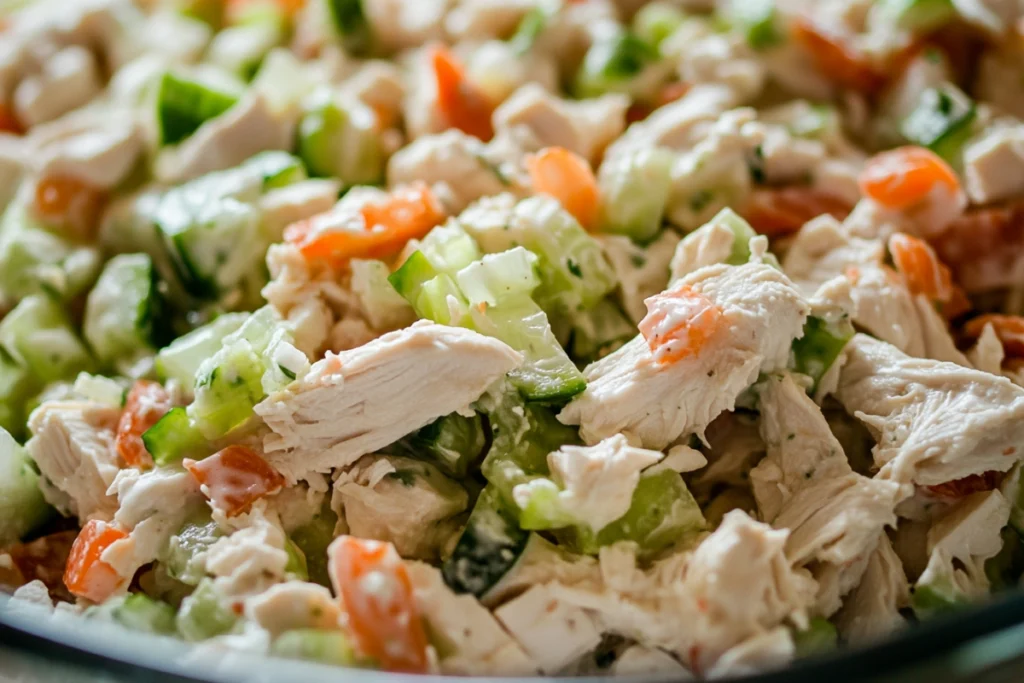
- Add Dressing Just Before Serving – If storing for later, keep dressing separate to prevent sogginess.
- Stir Before Serving – Some separation can occur, so mix it well before eating.
- Use Fresh Ingredients – The fresher the ingredients, the longer your salad will stay good.
FAQs About Preparation of Chicken Salad
Got questions about making the perfect chicken salad? You’re not alone! Here are answers to some of the most commonly asked questions about preparation, storage, and food safety.
What is the correct sequence in salad preparation?
The best way to prepare chicken salad is to follow a structured process. Start by cooking and cooling the chicken, then chop or shred it. Prepare your vegetables and mix your dressing separately. Finally, combine everything gently, ensuring the dressing coats the ingredients evenly. Letting the salad chill before serving allows the flavors to meld together for the best taste.
What should not be done in the preparation of chicken salad?
Avoid common mistakes like overcooking the chicken, adding too much dressing, or mixing the salad while the chicken is still hot. Also, be careful with watery vegetables like cucumbers, which can make your salad too runny. For the best texture and taste, always use fresh ingredients and chill the salad before serving.
What is the best way in preparing salad?
The best way to prepare chicken salad is to start with high-quality chicken, properly cooked and cooled. Use a mix of crunchy and soft ingredients for texture, and balance your dressing so it’s not too heavy or too light. Combine everything gently and refrigerate before serving to enhance the flavors.
Which is a guideline to follow to keep food safe when preparing chicken salads?
Food safety is key when making chicken salad. Always cook chicken to 165°F, store it in an airtight container, and refrigerate the salad promptly. Avoid leaving it out at room temperature for more than 2 hours. If you’re serving it outdoors in warm weather, keep it chilled on ice.
How do I prevent my chicken salad from becoming watery?
Watery chicken salad usually happens when ingredients release moisture after mixing. To prevent this, let cooked chicken cool completely before adding dressing. Drain or deseed any watery vegetables like tomatoes or cucumbers, and store the salad in an airtight container to maintain freshness.
Can I make chicken salad ahead of time?
Absolutely! Chicken salad can be made a day in advance and actually tastes better after sitting for a few hours. Just be sure to store it properly in the fridge, and if possible, keep the dressing separate until just before serving to prevent sogginess.
What are the best seasonings to enhance chicken salad?
Seasonings can take your chicken salad from basic to bold. Some great additions include:
- Salt and Black Pepper – Essential for flavor balance.
- Garlic Powder or Onion Powder – Adds depth without overpowering.
- Dill or Parsley – Fresh herbs bring brightness to the salad.
- Paprika or Smoked Paprika – Adds a hint of warmth and color.
- Lemon Juice or Vinegar – A splash of acidity enhances all the flavors.
Experimenting with different seasonings can help you create a chicken salad that’s uniquely your own!

